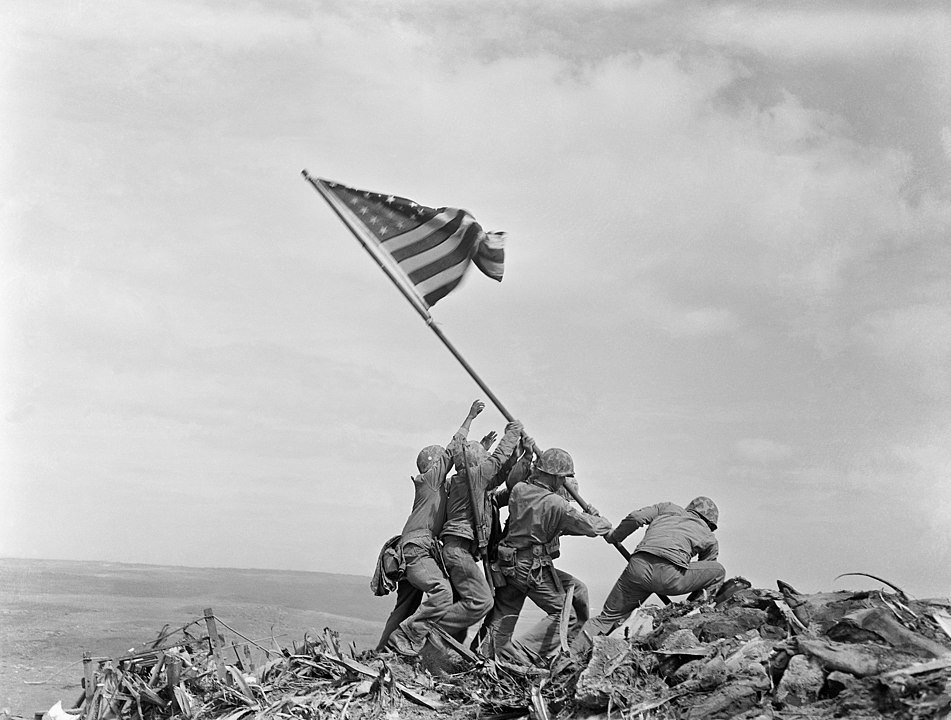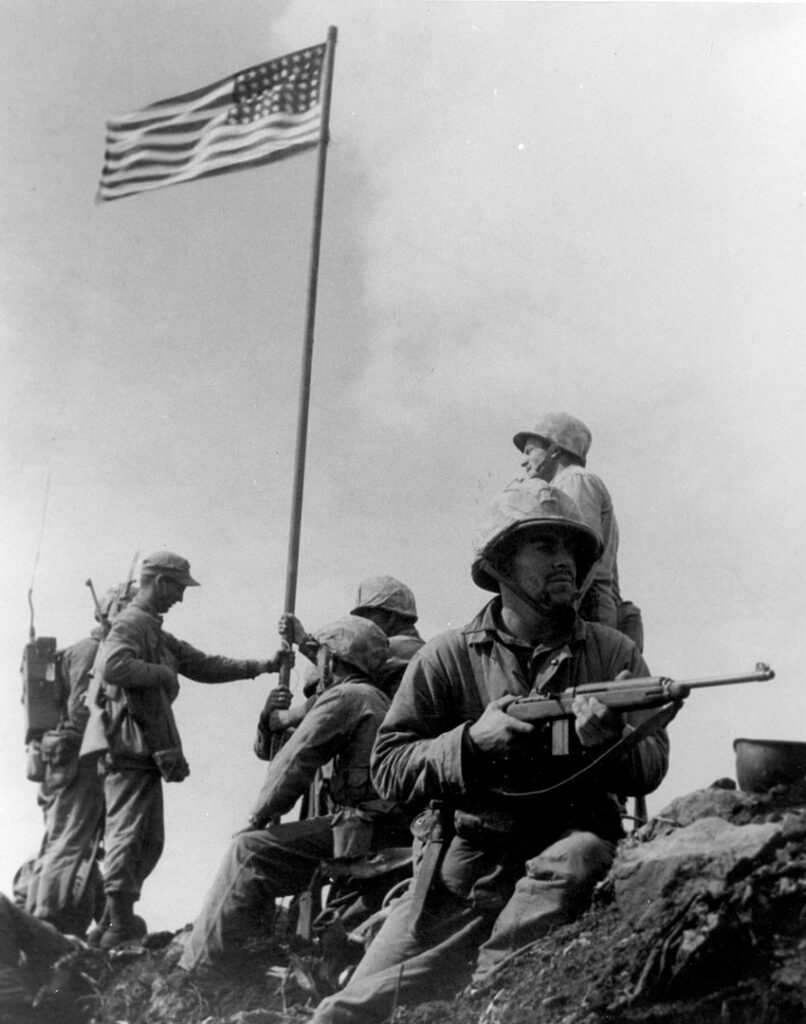There is always much to learn from quotes and their historical significance. Read on for a collection of quotes and general history from February 23rd – 27th.

For the first two days of this week, see last year’s post where I left off with the series.
February 23, 1945
“Out of the corner of my eye, I had seen the men start the flag up. I swung my camera and shot the scene. That is how the picture was taken, and when you take a picture like that, you don’t come away saying you got a great shot. You don’t know.”
– Joe Rosenthall
The iconic photo Raising the Flag on Iwo Jima was taken atop Mount Suribachi on February 23, 1945. Taken by Joe Rosenthal of the Associated Press, the photo was first published in Sunday newspapers just two days later, an incredible turnaround in those days. The flag raising occurred in the early afternoon to replace the smaller flag that was first raised earlier that morning when the mountaintop was captured. Today, the photo is one of the most recognizable images of World War II and the scene was used for the United States Marine Corps War Memorial.


February 24, 1582
“Don’t be fooled by the calendar. There are only as many days in the year as you make use of.”
– Charles Richards
Pope Gregory XIII instituted a reform of the Julian calendar by papal bull Inter gravissimas on February 24, 1582. The reform eventually came to be known as its own calendar called the Gregorian (or New Style) calendar that is used by most of the world today. The minor modification adjusted leap year to reduce the average year from 365.25 days to 365.2425 days and shifted the date to correct for the drift that had occurred during the centuries under the Julian calendar. The reason for this seemingly minor adjustment was to realign the date of Easter with the time of year it was originally celebrated when first introduced by the early Church.
February 25, 1570
“We charge and command all and singular the nobles, subjects, peoples and others afore said that they do not dare obey her orders, mandates and laws. Those who shall act to the contrary we include in the like sentence of excommunication.”
– Pope Pius V
Apparently, it’s a popular week in history for papal bulls. On February 25, 1570, Pope Pius V issued Regnans in Excelsis, excommunicating Queen Elizabeth I of England from the Catholic Church. Although delayed, this was retaliation for the Act of Supremacy of 1559 which reestablished the Church of England’s independence from papal authority. The bull didn’t just stop with the Queen, however, also excommunicating anyone continuing to obey her orders. The hope was to remove her subject’s allegiance in favor of Mary, Queen of Scots, but this never came to fruition.
February 26, 1935
“Neither our oceans nor our radar nor our fighters can keep us intact through another major war.”
– Philip Morrison
Just in time for deployment prior to WWII, the Daventry Experiment successfully demonstrated radar’s capability to detect aircraft on February 26, 1935. The technology proved crucial to the Allied victory, particularly in the Battle of Britain. While Robert Watson-Watt led the UK’s development efforts, several other nations were also conducting their own secret research into the technology. In fact, the actual term RADAR was coined by the US Navy in 1940 for “RAdio Detection And Ranging”. Today, radar’s use has expanded beyond purely military application to a number of civilian uses like meteorology and astronomy.

February 27, 1951
“If some termination to the services of the chief magistrate be not fixed by the Constitution, or supplied by practice, his office, nominally for years, will in fact, become for life; and history shows how easily that degenerates into an inheritance.”
– Thomas Jefferson
Formalizing the tradition set by George Washington and Thomas Jefferson, the Twenty-second Amendment to the United States Constitution was ratified on February 17, 1943, limiting a president to two elected terms. Although a few other presidents had sought a third term, the amendment is due in large part to Franklin D. Roosevelt’s record four presidential elections. The amendment also prohibits anyone having served more than two years of another elected President’s term from running a second time, effectively making a term limit of 10 years. However, there is some debate as to whether the amendment would prohibit a two-term president from running for vice president and potentially succeeding to a third term.
In case you missed last week’s quotes, see History February 16th – 22nd.
To never miss a Quill Quotes post, please subscribe via email and/or follow us on social media!
Love the quotes you shared!
♥ Mae
These quotes are so very interesting. A lovely way to learn history! Thanks for sharing.